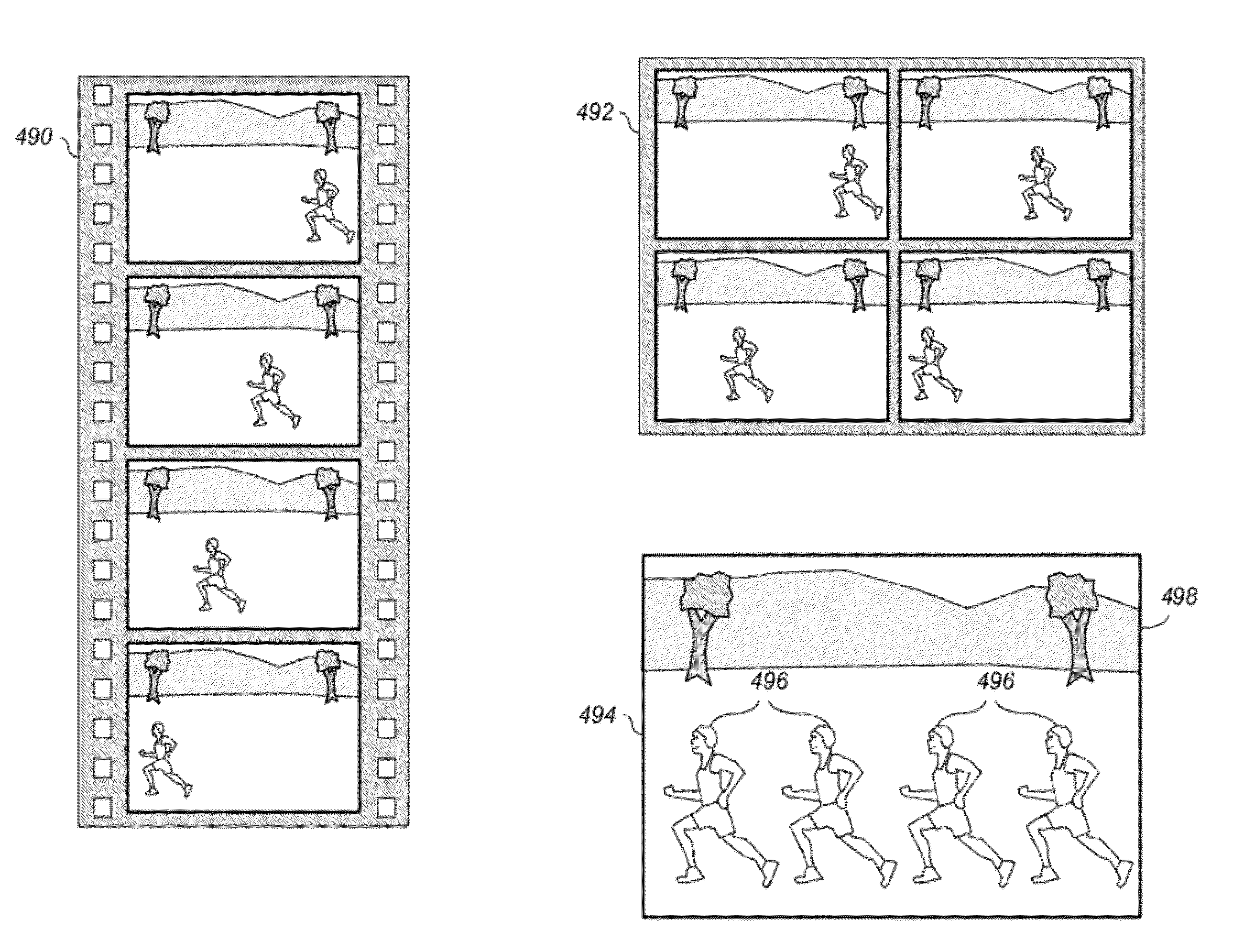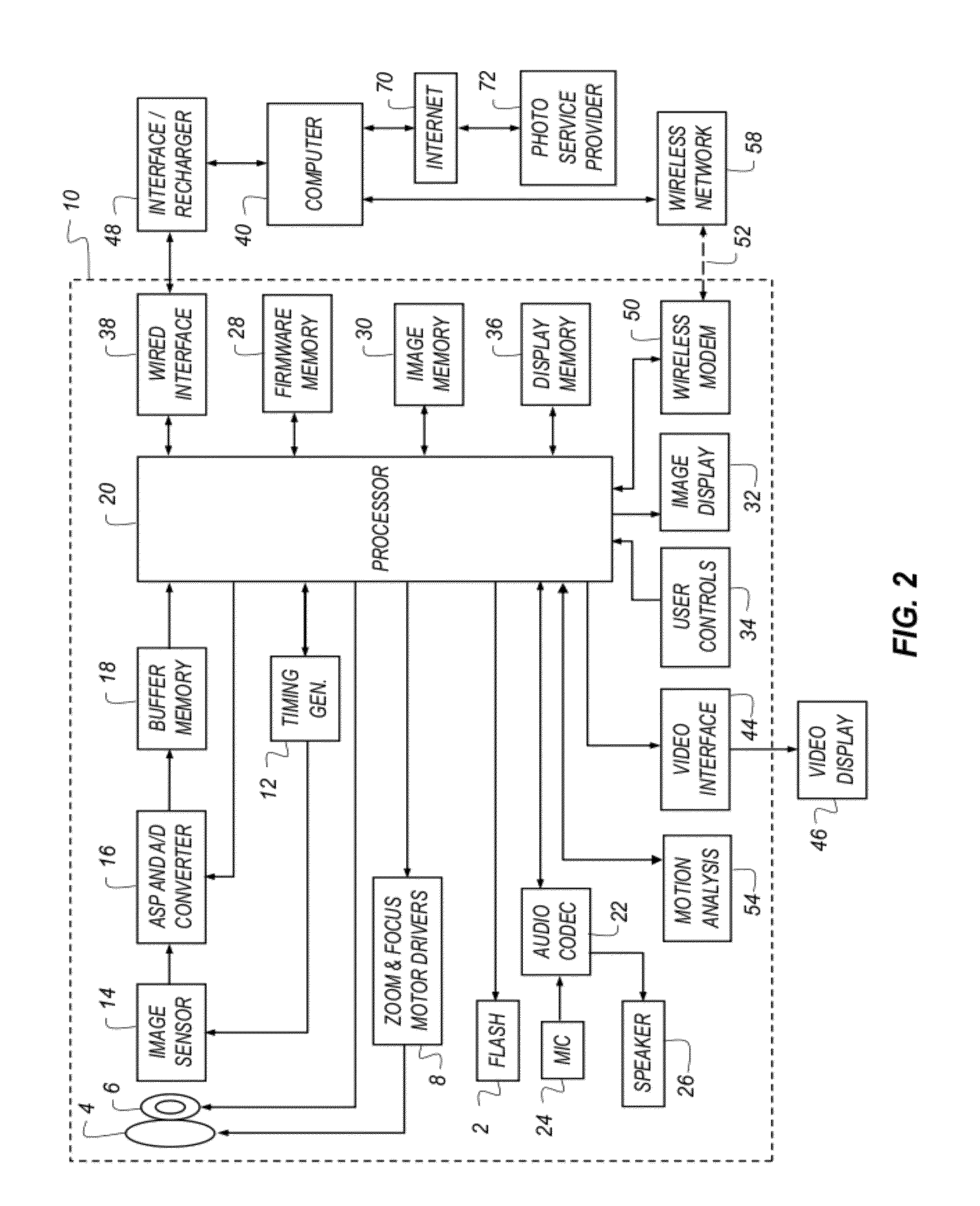Composite image formed from an image sequence
a composite image and image sequence technology, applied in the field of digital imaging, can solve the problems of increasing complexity and capabilities of digital camera devices, moving too quickly through the camera field of view, and complicated, and achieve the effect of determining the rate of motion
- Summary
- Abstract
- Description
- Claims
- Application Information
AI Technical Summary
Benefits of technology
Problems solved by technology
Method used
Image
Examples
Embodiment Construction
[0029]The present invention represents a digital camera having a burst image capture mode setting where the velocity of an object in the frame of view is used to determine the capture frame rate and the memory buffer requirements, which are then used to generate a composite image highlighting the object in motion. This invention provides a configuration for automatically determining various image capture settings, thereby reducing the need for the operator to manually determine the image capture settings, and reducing the number of unacceptable results.
[0030]In the following description, a preferred embodiment of the present invention will be described in terms that would ordinarily be implemented as a software program. Those skilled in the art will readily recognize that the equivalent of such software can also be constructed in hardware. Because image manipulation algorithms and systems are well known, the present description will be directed in particular to algorithms and system...
PUM
 Login to View More
Login to View More Abstract
Description
Claims
Application Information
 Login to View More
Login to View More - R&D
- Intellectual Property
- Life Sciences
- Materials
- Tech Scout
- Unparalleled Data Quality
- Higher Quality Content
- 60% Fewer Hallucinations
Browse by: Latest US Patents, China's latest patents, Technical Efficacy Thesaurus, Application Domain, Technology Topic, Popular Technical Reports.
© 2025 PatSnap. All rights reserved.Legal|Privacy policy|Modern Slavery Act Transparency Statement|Sitemap|About US| Contact US: help@patsnap.com



